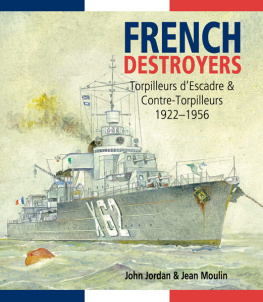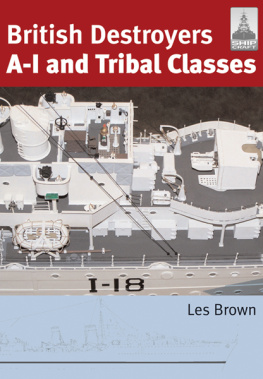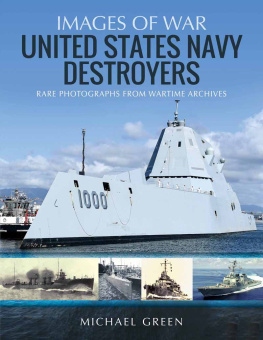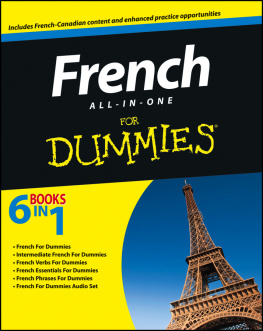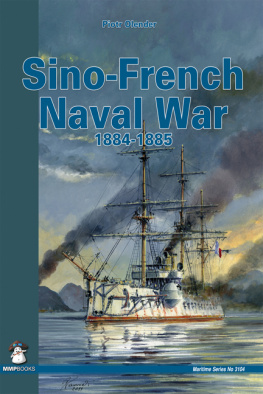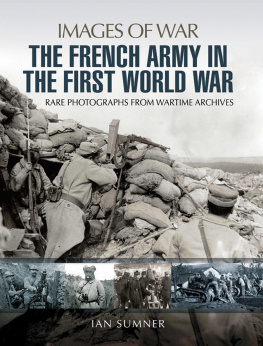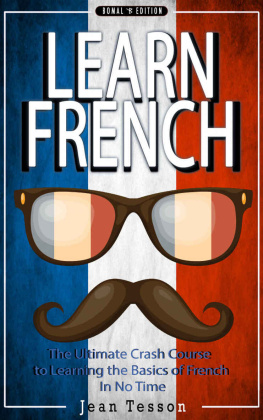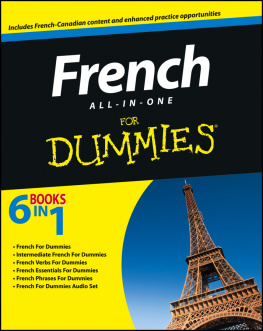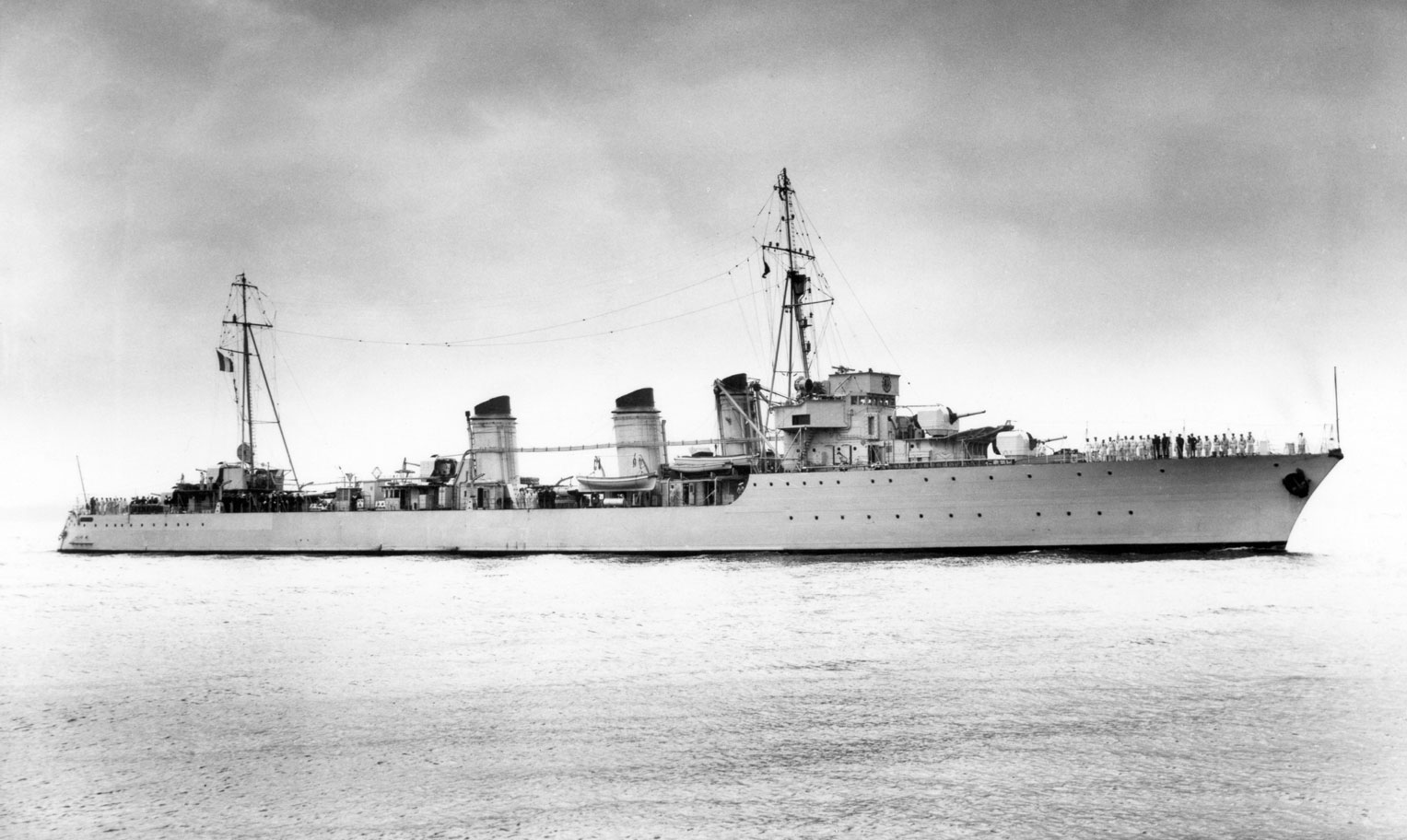
Chacal arriving in Portsmouth with her sister Lopard on 26 August 1936. The ships had recently been assigned to the Officer Training School, the Ecole Navale (see ), and were conducting a series of visits to major European ports as part of the training programme.
Copyright John Jordan & Jean Moulin 2015
Watercolour paintings Jean Blad 2015
First published in Great Britain in 2015 by
Seaforth Publishing
An imprint of Pen & Sword Books Ltd
47 Church Street, Barnsley
S Yorkshire S70 2AS
www.seaforthpublishing.com
Email
British Library Cataloguing in Publication Data
A CIP data record for this book is available from the British Library
ISBN: 978-1-84832-198-4
PDF ISBN: 978-1-84832-360-5
EPUB ISBN: 978-1-84832-359-9
PRC ISBN: 978-1-84832-358-2
All rights reserved. No part of this publication may be reproduced or transmitted in any form or by any means, electronic or mechanical, including photocopying, recording, or any information storage and retrieval system, without prior permission in writing of both the copyright owner and the above publisher.
The right of John Jordan and Jean Moulin to be identified as the author of this work has been asserted in accordance with the Copyright, Designs and Patents Act 1988
Typeset and designed by Stephen Dent
Printed and bound in China
CONTENTS
PREFACE
T HIS BOOK IS EFFECTIVELY THE SEQUEL TO French Battleships 19221956, written with Robert Dumas, and French Cruisers 19221956, with Jean Moulin, published by Seaforth Publishing in 2009 and 2013 respectively. The authors thought long and hard about the coverage of the book. It would have been easier in many respects to focus exclusively on the more glamorous contre-torpilleurs, the development of which spanned little more than ten years and marked a clearer and more coherent progression than that of the French fleet torpedo boats (torpilleurs descadre), which fell into two distinct groups with very different characteristics; it would have also greatly simplified the service histories of these two categories of ship, which were deployed for quite different tasks, particularly during the early part of the Second World War. However, a follow-on book dealing only with the torpilleurs descadre would have been difficult to justify in commercial terms, so this would have remained a significant gap in English-language coverage of the type. More compellingly, the technological and developmental links between the contre-torpilleurs (CT) and the torpilleurs descadre (TE) of the interwar period were closer than has been acknowledged: the TE of the Bourrasque and LAdroit classes were designed by the same small ships department of the Service Technique des Constructions Navales (STCN) which designed the CT of the Jaguar class, and had similar propulsion and common weapons systems, while the later TE of the Le Hardi class had many of the design characteristics of the last of the contre-torpilleurs of the Mogador class, of which they were close contemporaries. The late Henri Le Masson recognised these close developmental links when he wrote his seminal Histoire du Torpilleur en France, published by the Acadmie de la Marine in 1967.
French Destroyers 19221956 follows the same approach and organisation as the authors earlier book on French cruisers. A general introduction is followed by nine chapters detailing, in chronological sequence, the conceptual development, construction and characteristics of each of the nine classes of torpilleur and contre-torpilleur covered in the book. This technical section of the book covers the period 19261942 and is largely the work of John Jordan with the support and advice of Jean Moulin. The second part of the book, which is divided into four chapters, is a detailed account of the service lives of the ships during the four periods covered by the book: the prewar era (19261939), the early war period (19391943), the late war period when French naval forces rejoined the Allied cause (19431945), and the postwar era (19451956). Jean Moulin has again provided this historical section, which has been translated from the French by John Jordan. One significant change to the format adopted for the cruiser book has been the insertion between the technical and historical sections of a new chapter dealing with paint schemes and recognition markings, which were an important recognition feature for both types of French flotilla craft; this chapter is a collaboration between both authors. Another is the provision of appendices at the end of the historical chapters dealing with the extensive modifications made to some ships during their service alongside the Allies from June 1940 to late 1945, and the conversion of the contre-torpilleur Albatros to serve as a gunnery training ship after the war; these are primarily the work of John Jordan.
The present book aims to summarise for Englishspeaking readers the considerable quantity of information, backed up by recently-released official documentation, made available in a series of monographs on the torpilleurs and contre-torpilleurs published in France since the mid-1990s (see Sources ). In addition to the technical and historical aspects of destroyer development in France between the wars, the book focuses closely on issues of infrastructure, tactical organisation and even national culture, which are not always well understood on this side of the Channel. It is hoped that this book will give the reader a better understanding not only of the design philosophy and technical characteristics of these ships, but also of the history and traditions of the Marine Nationale during the twentieth century.
THE DRAWINGS
The line drawings and labelled schematics by John Jordan, most of which have been specially prepared for this book, are based on official plans and other documentation currently held by the Centre dArchives de lArmement (CAA) at Chtellerault; many of the plans have been openly published on the website of the Service Historique de la Dfense. Some of these plans and documents have only recently been made available as part of the Fonds Potsdam, an archive of material assembled by the German Kriegsmarine during the Occupation and transferred to Berlin, where it was seized by the Russians in 1945; the materials were returned to France after the fall of the Berlin Wall and have now been reclassified and distributed among the various French national archives. Unfortunately only partial documentation concerning the torpilleurs descadre of the Le Hardi class has survived, and much of this dates from 1936, before the final as-fitted plans were drawn up by the shipyards. However, by piecing together the information available and by extrapolation from other contemporary projects, notably the contre-torpilleurs of the Mogador type and the battleships of the Richelieu class (which introduced the revolutionary Sural forced-circulation boiler), the authors are confident that they have produced the most complete study yet of these ships, even though some detailed aspects of the design must remain a matter for conjecture.
The colour section again features the work of marine artist Jean Blad, formerly the Surgeon General for the French armed forces. These beautiful watercolours, which were painted during Jeans time in the Navy (19221965), constitute a valuable record of the destroyers and their activities, and provide a comprehensive illustration of the paint schemes and tactical markings of the ships at the various stages of their service lives.
Next page
